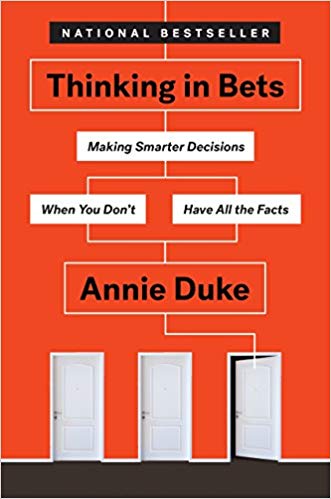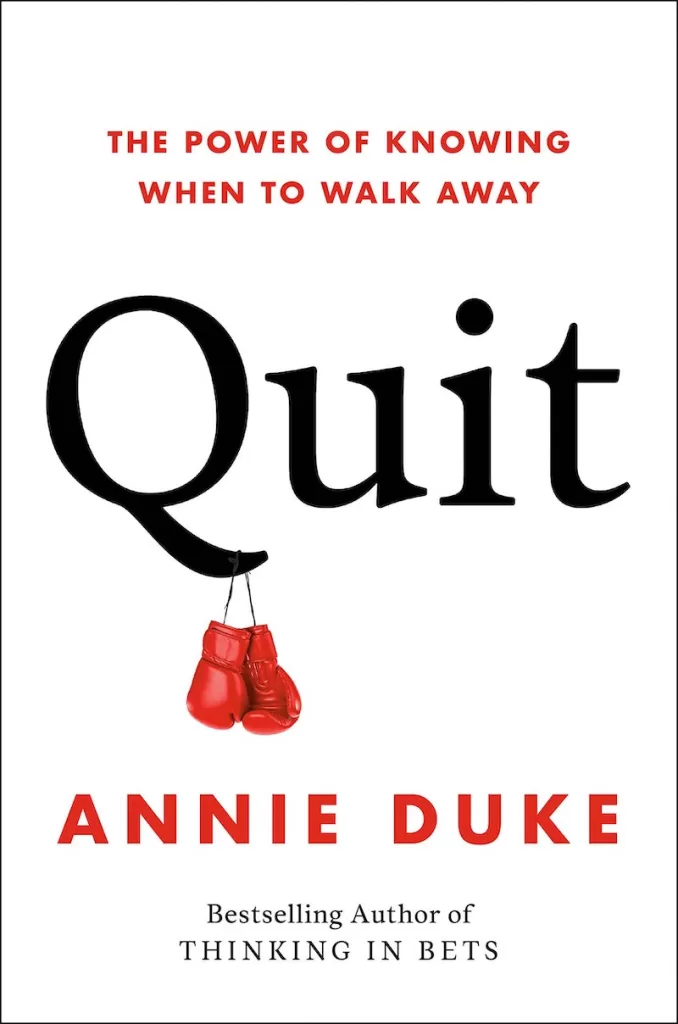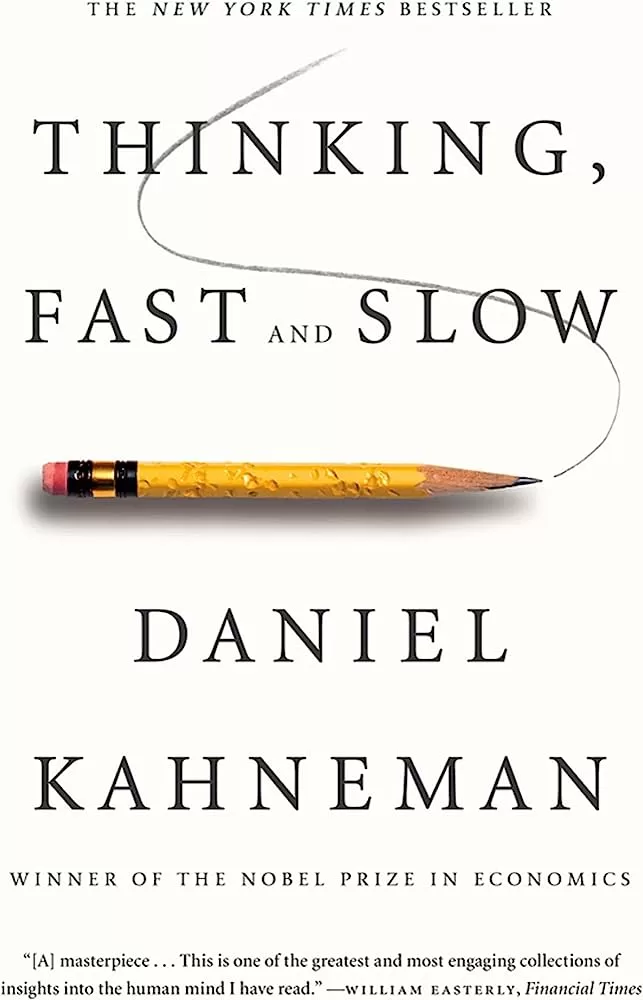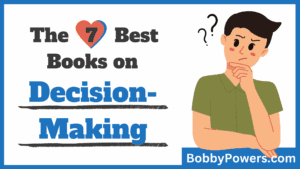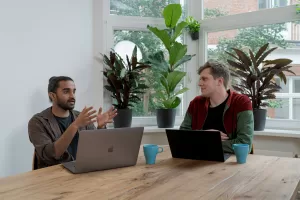The 7 Best Books on Decision-Making

Whether you're a company executive determining which direction to take your business, a parent deciding how to raise a child, or a student choosing which college to attend, the decisions you make each day actively shape the life you lead.
Or, as many have said before, the quality of your decisions determines the quality of your life.
From all the books I've read, here are the seven best books about how to make great decisions in life and work, alphabetized by author's last name.
Book Summary
Edward de Bono says we have a problem in Western culture: we focus too much on argument and debate when making decisions. This causes discussions to become a battle of willpower, ego, and one-upmanship instead of an honest search for the truth.
de Bono suggests a better path: leaders should encourage teams to use “parallel thinking”: Everyone simultaneously evaluates the decision from the same perspective. Specifically, he outlines six lenses you can use to evaluate any decision. This model is especially useful for teams, but it's also helpful for evaluating personal decisions.
“What I am putting forward in this book is a very simple concept which allows a thinker to do one thing at a time. He or she becomes able to separate emotion from logic, creativity from information, and so on…
The six thinking hats allow us to conduct our thinking as a conductor might lead an orchestra. We can call forth what we will.” -Edward de Bono
Key Takeaway: Evaluate Decisions from 6 Different Hats
- The White Hat: Objective data, metrics, and information
- The Red Hat: Emotion, feelings, and intuition
- The Black Hat: Risks, cautions, and pessimism
- The Yellow Hat: Benefits, hopes, and optimism
- The Green Hat: Creativity, ideas, and new approaches
- The Blue Hat: Control, organization, and guidance
👉 Dive deeper into my takeaways from the book here.
Book Summary
Dobelli breaks down 99 ways our brains trick us every day. Some are commonly known (like confirmation bias and the sunk cost fallacy), whereas others are deep cuts (like the contrast effect and information bias).
The Art of Thinking Clearly is an interesting, quick dip into psychological biases for anyone who wants a high-level overview instead of a dense read like Kahneman's Thinking, Fast and Slow (described below).
“Never ask the barber if you need a haircut." -Anonymous
Key Takeaways
- "You have to stick within what I call your circle of competence. You have to know what you understand and what you don't understand. It's not terribly important how big the circle is. But it is terribly important that you know where the perimeter is." -Charlie Munger
- Make a habit of writing down your predictions. Then you'll learn how often you're wrong about things.
- Our brains don't intuitively understand things like exponential growth, compounding returns, and complex systems. Learn to recognize that any mistake you see in another person's logic likely resides in your brain too.
Book Summary
Thinking in Bets is an exposé of our illogical thinking patterns, told by a poker pro schooled in graduate-level psychology. In this book, poker champion Annie Duke shares her experience studying human behavior at high-stakes poker tables. Duke's work is a timely explanation of why we succumb to fake news, "Monday morning quarterbacking," and "resulting" (explained below).
I learned a lot from this book, and I've begun to draw upon its insights in my work. You'll find this book to be a practical guide for improving decision-making in any area of your life.
“Over time, those world-class poker players taught me to understand what a bet really is: a decision about an uncertain future. The implications of treating decisions as bets made it possible for me to find learning opportunities in uncertain environments.” -Annie Duke
Key Takeaways
- It's tempting to evaluate a decision based on how it turned out: good outcome -> good decision; bad outcome -> bad decision.
- This type of "resulting" is a deeply flawed way of appraising our decisions.
- Resulting discounts the element of luck and can lead us to learn the wrong lessons from both our successes and our failures.
- “100% of our bad outcomes aren’t because we got unlucky and 100% of our good outcomes aren’t because we are so awesome. Yet that is how we process the future as it unfolds.”
- One of the best ways to remember the long-term impact of our decisions is to engage in a bit of "mental time travel." Specifically, you can use the 10-10-10 Rule: consider the potential consequences of how a decision could turn out in 10 minutes, 10 months, and 10 years.
👉 Dive deeper into my takeaways from the book here.
Book Summary
Our society applauds grit to the point of driving entrepreneurs to burnout, athletes to injury, and mountain climbers to literally die on hills rather than turning back. Simply put, most of us are bad at quitting.
Duke investigates the psychological forces that prevent us from quitting and offers ideas for how to find a better balance between grit and quit.
"People stick to things all the time that they don't succeed at, sometimes based on the belief that if they stick with it long enough, that will lead to success. Sometimes they stick with it because winners never quit.
Either way, a lot of people are banging their heads against the wall, unhappy because they think there is something wrong with them rather than something wrong with the advice. Success does not lie in sticking to things. It lies in picking the right thing to stick to and quitting the rest." -Annie Duke
Key Takeaways
- Society has turned grit into a badge of honor, but there are plenty of times when it makes more sense to quit a project, job, or relationship that isn't serving you.
- We're all prone to make the same mistake of holding on too long. Thankfully, there are many things you can do to improve your ability to strategically and thoughtfully quit at the correct time, such as:
- Determining "kill criteria" in advance (when you will quit something)
- Enlisting someone to serve as your "quitting coach" to guide you toward better decisions
- Tackling the difficult aspects of a project sooner so you can see whether the project is worth the effort required.
👉 Dive deeper into my takeaways from the book here.
Book Summary
Kahneman won a Nobel Prize in economics back in 2002, and he's considered one of the pioneers in behavioral economics. His books tend to be dense and take a long time to read (this one is no exception), but they're absolutely packed with compelling research and fascinating tidbits.
Kahneman's most recent book Noise (co-authored with Olivier Sibony and Cass Sunstein) is also great, but Thinking, Fast and Slow remains his defining work. In it, he breaks down dozens of cognitive biases that affect daily decision-making. If The Art of Thinking Clearly is an appetizer, this is the five-course meal.
“A reliable way to make people believe in falsehoods is frequent repetition, because familiarity is not easily distinguished from truth. Authoritarian institutions and marketers have always known this fact.”
Key Takeaways
- We have two mental systems that help us make decisions: intuition ("System 1") and conscious, slower thinking ("System 2").
- Intuition has its advantages, as Malcolm Gladwell teaches in his excellent book Blink. But our fast-twitch responses to many situations lead us to make some horrible decisions, as Kahneman outlines.
- By taking our time, allowing our brains to take occasional breaks, and questioning our first choices, we can learn to make better, more informed decisions.
Book Summary
Only Nate Silver can make statistics seem sexy. Silver is the statistician who correctly predicted how 49 of 50 states would vote in the 2008 presidential election, then followed that up by nailing all 50 states in the 2012 presidential election.
The Signal and the Noise explores realms as diverse as finance, meteorology, poker, and politics — all infused with Silver’s wit and unconventional ideas.
“The most calamitous failures of prediction usually have a lot in common. We focus on those signals that tell a story about the world as we would like it to be, not how it really is. We ignore the risks that are hardest to measure, even when they pose the greatest threats to our well-being. We make approximations and assumptions about the world that are much cruder than we realize. We abhor uncertainty, even when it is an irreducible part of the probelms we are trying to solve." -Nate Silver
Key Takeaways
- Nothing is 100% certain. Become comfortable quantifying your guesses as a percentage so you can quantify your level of uncertainty.
- There is no such thing as objective predictions. Every prediction comes laced with the forecaster's bias, worldview, and prior experiences.
- To make a wise decision or accurate prediction, you need to think both BIG and small. You must understand the overarching system at a 30,000-foot level and the tiny minutiae at a 500-foot level.
- Ideas rarely come while standing in place. You'll learn best by taking action: form a hypothesis, test it, and learn from your mistakes.
Book Summary
Nassim Nicholas Taleb's "Incerto" series (5 books about luck, uncertainty, and decision-making) is one of the most brilliant things I've ever read. The guy is completely full of himself and wants you to know how smart he is, but he can also back it up with some brilliant ideas that will cause you to see the world in a new way.
If you want to check out any of Taleb's work, I would start with Fooled by Randomness. It's dense and can make for difficult reading at times, but it will expand your understanding of how luck plays a role in investing, business, and life. Books like this help us realize what we do and don't control in life, which is a key tenet of decision-making.
“Mild success can be explainable by skills and labor. Wild success is attributable to variance.” -Nassim Nicholas Taleb
Key Takeaways
- Our brains quickly tell stories whenever we see anything happen—something often referred to as the "narrative fallacy." If a stock goes up, talking heads on TV immediately have a reasonable explanation of why it went up. If a company fails, investors say they knew it would happen all along because of X, Y, or Z. But the reasons we generate are often simple at best and utterly incorrect at worst.
- It's tempting to look for simple explanations for complex events, but those events are complex for a reason and can often only be understood by understanding many factors rather than a single isolated reason.
- Survivorship Bias governs the majority of the success stories you read about in the news and social media. You hear about the person who mortgaged their house to fund their startup, then went on to become a billionaire. You don't hear about the hundreds who did the same thing and went into bankruptcy. Remember that most of life is a highlight reel of the survivors. Read success stories with a critical eye.
Each book above includes an affiliate link from Bookshop.org. (If you purchase one of the books, you’ll support me as well as local bookstores. Win-win!)
If you have a favorite book about decision-making that isn't represented above, I'd love to hear about it.
Thanks for reading!


